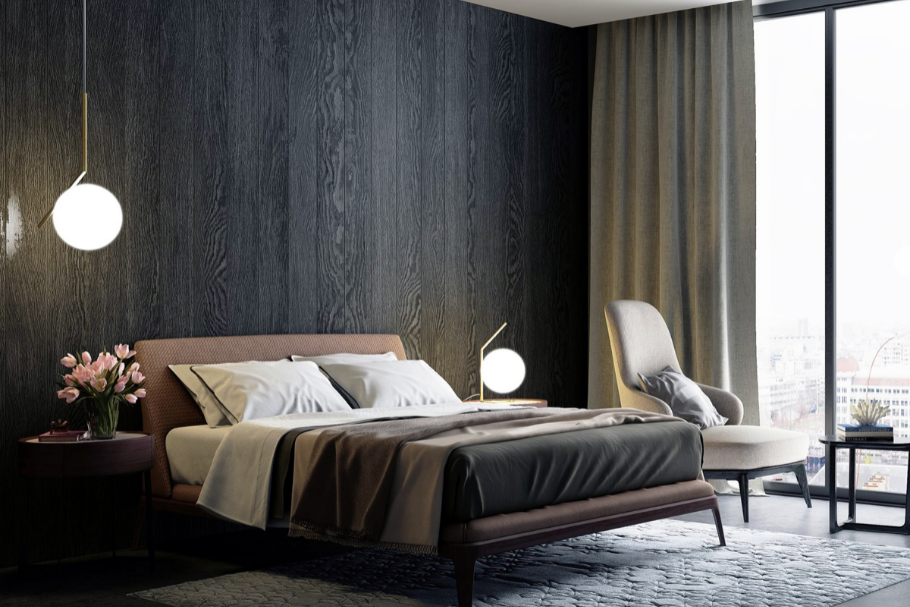Sleep-Friendly Environment – 5 Bedroom Designing Tips for Restful Nights

Sleep-Friendly Environment - 5 Bedroom Designing Tips for Restful Nights
Introduction
A restful night’s sleep is essential for overall well-being and vitality. The environment in which we sleep plays a significant role in the quality of our sleep. By creating a sleep-friendly bedroom, we can optimize our sleep environment and enhance our ability to unwind, relax, and enjoy rejuvenating sleep.
In this blog post, we will explore effective strategies and practical tips for designing a sleep-friendly bedroom that promotes relaxation, tranquility, and restful nights.
From lighting and colors to bedding and organization, we will cover all aspects of bedroom design to help you create an ideal sanctuary for restorative sleep.
Optimal Lighting for Sleep
Lighting plays a crucial role in regulating our sleep-wake cycle.
- During the evening and nighttime, exposure to bright or blue-enriched light can disrupt our natural melatonin production and make it difficult to fall asleep.
- To create a sleep-friendly environment, opt for dimmable lights or warm-colored light bulbs in the evening. Consider using blackout curtains or blinds to block out external light sources that can interfere with your sleep.
- Additionally, minimize the use of electronic devices with bright screens before bedtime, as they emit blue light that can suppress melatonin production.
Choosing Calming Colors and Decor
The colors and decor in your bedroom can greatly influence your mood and overall sense of calmness.
- When designing a sleep-friendly bedroom, opt for soothing and neutral colors, such as soft blues, greens, or earthy tones.
- These colors promote a sense of relaxation and tranquility, setting the stage for restful sleep.
- Incorporate elements of nature, such as plants or nature-inspired artwork, to create a serene and peaceful ambiance.
- Keep the room clutter-free and organized to reduce visual distractions and promote a sense of calm.
Optimizing Comfortable Bedding
Investing in comfortable and supportive bedding is essential for a good night’s sleep.
- Start with a quality mattress that suits your comfort preferences and provides adequate support for your body.
- Choose pillows that align with your sleeping position and provide proper neck and head support.
- Opt for breathable, natural fibers for your sheets and bedding to help regulate body temperature and enhance comfort.
- Experiment with different mattress toppers or sleep accessories, such as weighted blankets or body pillows, to find what works best for you.
- Remember, personal comfort is key when it comes to designing a sleep-friendly bedroom.
Soundproofing and Noise Reduction
A quiet environment is crucial for undisturbed sleep.
- To create a sleep-friendly bedroom, consider soundproofing measures to reduce external noise disturbances.
- Use carpets or rugs to absorb sound and minimize echoes.
- Install weatherstripping or draft guards to block out noise from doors and windows.
- If you live in a noisy area, consider using white noise machines, fans, or soothing soundscapes to mask unwanted noises and promote a peaceful sleep environment.
- Earplugs or noise-canceling headphones can also be helpful for individuals who are sensitive to noise disruptions during sleep.
Promoting Clean Air and Temperature Control
Air quality and temperature play significant roles in sleep quality.
Ensure proper ventilation in your bedroom to promote clean and fresh air.
- Use air purifiers or plants that naturally filter the air, such as snake plants or peace lilies, to improve indoor air quality.
- Additionally, maintain a comfortable temperature in your bedroom by keeping it cool, ideally between 60 to 67 degrees Fahrenheit (15 to 19 degrees Celsius).
- Use fans or adjust the thermostat to create an optimal sleeping environment.
- Experiment with bedding materials, such as breathable cotton or moisture-wicking fabrics, to regulate body temperature and avoid discomfort caused by overheating during the night.
Conclusion
Designing a sleep-friendly bedroom is a valuable investment in your overall well-being. By implementing the tips and strategies discussed in this blog post, you can create a peaceful sanctuary that promotes restful nights and rejuvenating sleep.
Remember, the key elements to consider include lighting, colors, bedding, soundproofing, air quality, and temperature control. Customizing your bedroom to align with your preferences and needs will help you establish an optimal sleep environment that supports relaxation, tranquility, and a good night’s sleep.
Prioritize the design of your sleep space, and reap the benefits of improved sleep quality and overall well-being.
For More Related Articles Browse Our Website Blogster.pk
For social Connection You can also Visit and follow our Social media Platforms
Facebook , Instagram, Linkedin, Pinterest, Quora, Twitter, Youtube.







